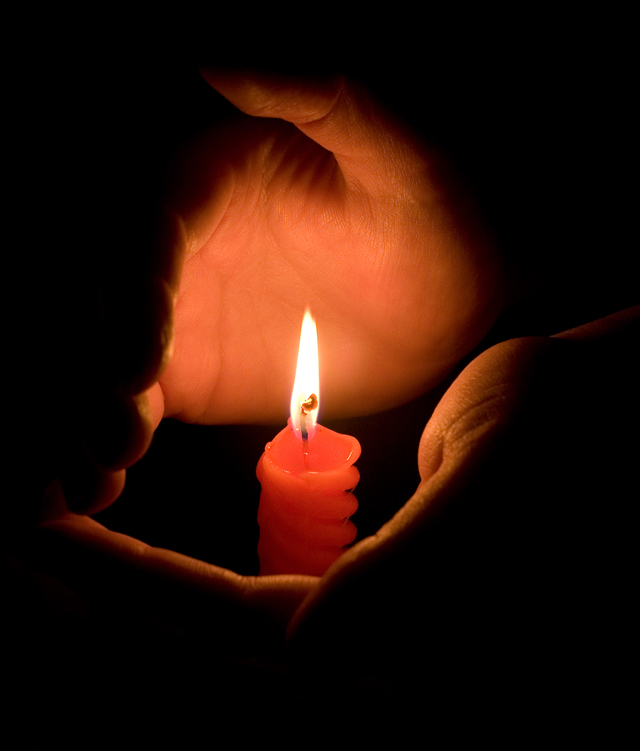
Most of us live in cities or in the urban fringes, places that are continually illuminated – streetlights, highways, vehicles, sportsgrounds, buildings. In such places it is rare to experience darkness – real, dark, darkness, that is. Where there’s no light – at all.
Somewhere on the web there’s an interesting satellite image of the entire world, showing all the lit-up areas, cities and small towns and highways. It is quite astonishing to see, particularly the northern hemisphere where there is more land and less ocean. The southern hemisphere is a bit less illuminated because there’s much more ocean in the southern half of the globe.
That is one reason why keen photographers of heavenly lights such as the aurora go into the countryside, away from the light pollution of urban areas. So too, do astronomers and other observers of the night skies.
In remote areas such as the desert or the bush on a cloudy night, or perhaps underground, with no moon or stars to give even the slightest glow of light, there can one experience real darkness.
By that I mean that pitch black, suffocating, claustrophobic darkness where absolutely nothing is visible. Nothing. Not a single thing. In fact, sometimes it can be so dark that even a hand held close to your face is invisible. Stepping into such darkness requires a strong nerve as well as a good torch.
When our kids were younger we used to go camping in remote places, far from towns. We’d pitch the tent in a bush clearing or on the beach and settle in for a week or two of peaceful relaxation. Our lights were a gas lantern and a couple of torches, essential for night-time treks on a narrow path to the dunny. We were always glad to return safely to the hissing glow of the lantern on our site.
I was thinking about light and dark recently, as our church marked the season of Advent. The expectation of the birth of the Christ Child, Advent is a time for pause, to reflect and prepare. Not in the same way as Lent but just as Christmas celebrates the birth of a baby, so can Advent remind us of Jesus the man, not the ‘what’ so much as the ‘why’ of the birth of God’s Son.
Part of our 4-week Advent season is the lighting of the candles on the Advent wreath, one candle each Sunday. This is a time to take stock of our faith as we recall the different parts of the wonderful story. We talk about the light of the world and the darkness that cannot overwhelm it. Light revealed God’s glory and presence to many people.
We have carols that tell God’s story, many of these written in times when most people could not read or write. Theology would be taught through the telling of stories and the singing of songs. This is how people have learned stuff throughout hundreds of years. Think of carols such as Once in Royal David’s City, or the Angel Gabriel’s Song to Mary telling her of her part in God’s story. There’s the Coventry Carol that tells of Jesus’ family fleeing from Herod’s murderous rage; the story of the Three Kings who followed the light of the star to find the baby.
And then there’s the shepherds. They were doing their ‘abiding’ thing far from home, out in the fields, where I imagine it was pretty cold and dark, as normal. Their sheep would have been protected in some kind of fold, with a fire both to keep the shepherds warm and to frighten away wild animals that were keen to snatch a lamb or two. There may have been some stars but I’m sure it was very dark until suddenly the sky was filled with angels all aglow and singing God’s praises: Hark the herald angels sing. How awesome would that have been? Just think of it!
I imagine it must have been a little bit like standing out in the bush or desert on a clear night, far from civilisation, and looking up at the glorious stars of the Milky Way, a heavenly host streaming right across our southern sky.
This Christmas may we all enjoy the love, joy and peace of the season but above all, may we remember the light that darkness cannot overcome.
.jpg) Sheelagh Wegman is a freelance writer and editor. She enjoys reading, music, sings in the choir of St David’s Cathedral in Hobart and lives in the foothills of kunanyi/Mt Wellington.
Sheelagh Wegman is a freelance writer and editor. She enjoys reading, music, sings in the choir of St David’s Cathedral in Hobart and lives in the foothills of kunanyi/Mt Wellington.
Sheelagh Wegman’s previous articles may be viewed at http://www.pressserviceinternational.org/sheelagh-wegman.html

Sheelagh Wegman is a freelance writer and editor. She is in the community of St David’s Cathedral in Hobart and lives in the foothills of kunanyi/Mt Wellington.
Sheelagh Wegman’s previous articles may be viewed at http://www.pressserviceinternational.org/sheelagh-wegman.html
